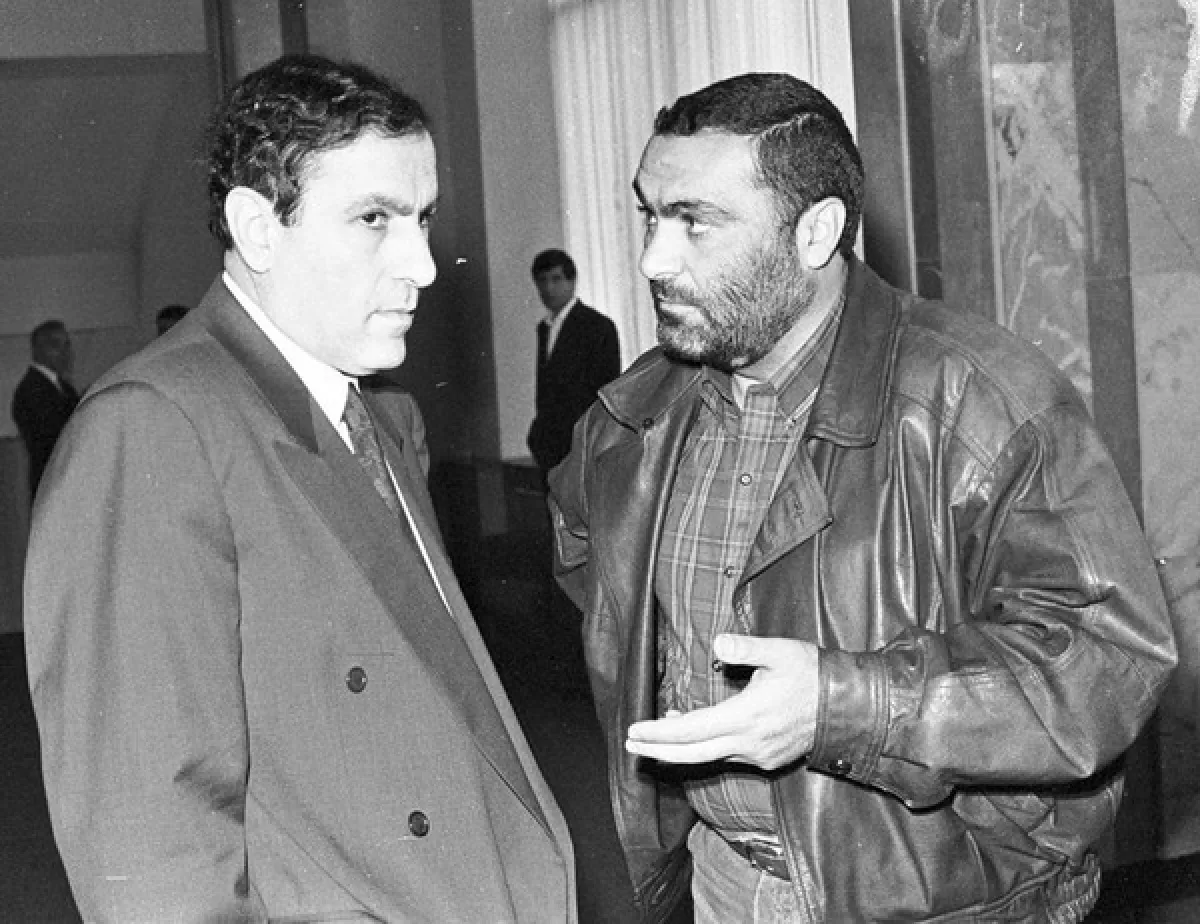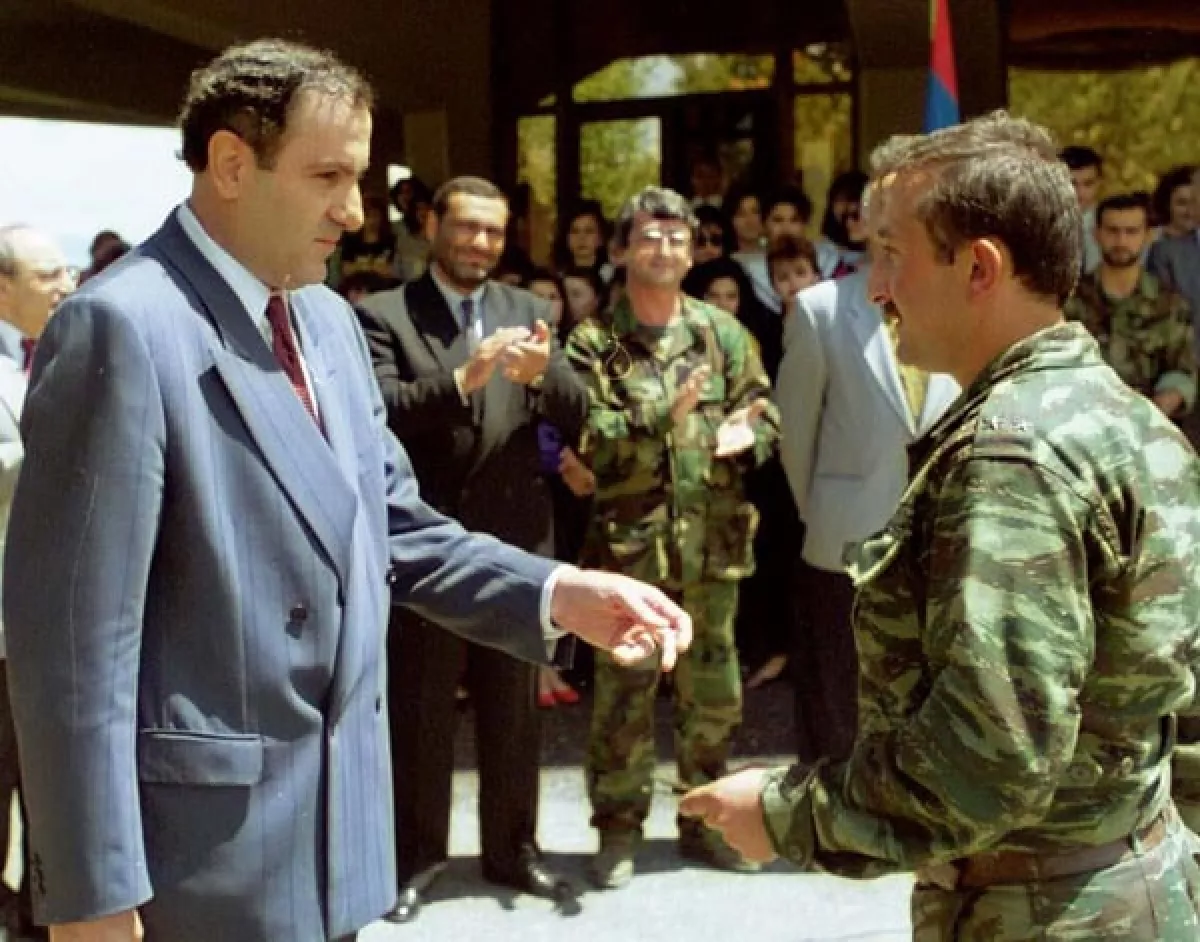The true face of Armenian nationalism The Third Reich in the Third Republic
Canadian-based and well-known video blogger, Baku native Albert Isakov, recently published a highly intriguing video titled "The First President of Armenia Ter-Petrosyan and the True Goals of the Armenian National Movement." The video features a recording of a speech by Armenia's first president, Levon Ter-Petrosyan, at a meeting with members of the terrorist organization Yerkrapah on July 23, 1993. The translation and voiceover were done by Albert Isakov himself, who has a strong command of the Armenian language.
This material is particularly noteworthy as it debunks the Armenian side's narratives of a supposedly defensive motivation behind the separatist movement in Karabakh and the associated "national liberation" movement in Armenia. Moreover, it exposes the Nazi-like essence of the prevailing Armenian ideology. Let us examine the key points of Armenia's first president directly from his own words.
"If everything hadn't started in 1988, there would be no Karabakh today. We organized the work, created squads, and gained experience. Armenia and Artsakh have been completely cleansed of other nations. I repeat, this is a six-hundred-year-old problem. Its significance will continue to be felt by the Armenian people for another 600 years after this," Ter-Petrosyan declares at the beginning of his address.

What exactly Ter-Petrosyan means by the "six-hundred-year-old problem" is difficult to determine, given the multitude of myths in Armenian history. However, the underlying theme is fairly obvious—presumably, it refers to some date marking the fall of the last mythical "Armenian kingdom" at the hands of the Turks. But let us not be distracted by these "excursions" into fabricated Armenian history. The key message, which the then Armenian leader articulated quite clearly, is that "Armenia and Artsakh have been completely cleansed of other nations." A striking observation, worthy of deeper analysis, wouldn’t you agree? However, let us not rush—let us remember this point and read further, as Ter-Petrosyan continues to develop his anti-Azerbaijani rhetoric:
"Imagine if there were still 170,000 representatives of other nationalities in Armenia today, as there were before 1988. We wouldn’t have a state today. We wouldn’t be able to defend our northern and eastern regions. Moreover, we would have gained three new problems. Remember that Azerbaijanis constituted the majority in three regions: Vardenis, Masis, and Amasia. And they were significant in the Zangezur region. This problem has been solved. It didn’t come to us as a gift from the heavens. This issue was resolved by our movement, the national liberation struggle of our people, the Armenian All-National Movement, and its military wing—our self-defense detachments, our Yerkrapah squads. The same applies to Artsakh. Today, the entire territory of Artsakh, and much more, is in Armenian hands."
Here, we must pause. What we have before us is video evidence in which Armenia's first president openly admits to ethnic cleansing. Particularly repugnant is the use of the phrase "self-defense detachments." When Armenians refer to "self-defense detachments" in Karabakh, it is a lie, albeit one that fits within their propaganda narrative of a "Karabakh oppressed by Azerbaijanis." However, the notion of Armenian self-defense detachments within Armenia itself is utterly absurd, even from the perspective of Armenian propaganda.
Why would such units be necessary in a republic where Armenians, thanks to Soviet policies, already constituted the majority? Ter-Petrosyan answers this question with brutal candor: these were punitive squads whose purpose was terrorizing and expelling the indigenous Azerbaijani population from Soviet Armenia.
Let’s continue listening.
"Secondly, if this movement hadn’t started in time, the 500,000 Armenians living in Azerbaijan, even if they hadn’t been physically exterminated, would have become hostages—a powerful lever to bring Armenia to its knees. These Armenians were saved; 300,000 of them found refuge in Armenia, and in 10 years, their number will grow to 1 million or even 1.5 million," the first Armenian president speculates wildly, adding: "This was a national-scale problem that was solved by our movement."
Here, Ter-Petrosyan anticipates a future, fair question: why was it necessary to sacrifice the powerful Armenian diaspora in Azerbaijan? According to his deceitful narrative, these Armenians—particularly those from Baku—would supposedly have become enslaved hostages. A convenient excuse in case the miatsum project collapsed—which, indeed, it did 30 years later. The cunning Levantine likely sensed this outcome not only in 1998, when he penned his infamous article, but as early as 1993. However, even his crafty intellect failed to predict that 300,000 would not grow into 1 million, let alone 1.5 million.
Armenia, lacking resources and burdened with maintaining the occupied territories of Karabakh, never became a promised land for Armenians. For three decades, the primary goal of its citizens has been to leave the country.
Albert Isakov himself comments on this, questioning Ter-Petrosyan:
"How did local Armenians treat Baku Armenians? How many of them remained in Armenia, and how did they contribute to solving the demographic problem?"

Ter-Petrosyan’s third point, which he himself described as the most important, also deserves attention:
"We have always combined military actions with diplomacy. So far, we have succeeded. This is precision work. If we continue in this manner, we will not lose our success. We have removed the issue of Nagorno-Karabakh’s status from the agenda. The main task is to stop the war, establish a lasting peace, and only then sit at the negotiation table. If it takes 20 years, 30 years—negotiate the status of Karabakh. In the meantime, the security and livelihood of Karabakh’s population will be ensured, its economy will develop, its population will multiply, and we will achieve our ultimate goal."
There’s no need to delve into the details—it’s sufficient to state that Ter-Petrosyan miscalculated on all fronts.
In summary, Ter-Petrosyan, in that speech, openly admits that Armenia itself initiated the first armed conflict in the South Caucasus and carried out ethnic cleansing of Azerbaijanis both in Armenia and Karabakh. Moreover, his rhetoric is rife with concepts characteristic of Nazi ideology, which, combined with Armenia's actions, demonstrates that this ideology has become dominant and official in the country.
It is particularly intriguing to consider how EU officials, who still claim to represent the liberal camp, will react to this video. Will it provoke revulsion, or will they, in the finest tradition of double standards, simply brush it off? The latter scenario seems most likely. After all, in their worldview, anything aimed against Muslims—especially Turks—is inherently "acceptable."
This speech by Ter-Petrosyan serves as a concentrated expression of the mission behind the entire "democratic movement" in Armenia—the collapse of the Soviet Union and the occupation of Karabakh. Yes, Ter-Petrosyan, who usually presented himself more diplomatically at official events, decided to be candid in the company of war criminals. It seems that history itself captured this vile act of Armenian nationalism, destined to be revealed thirty years later for the judgment of our contemporaries. How fortunate that this Nazi criminal is still alive, witnessing not only the collapse of his life's work but also his own disgrace.
What would you say to this, Levon Ter-Petrosyan?








